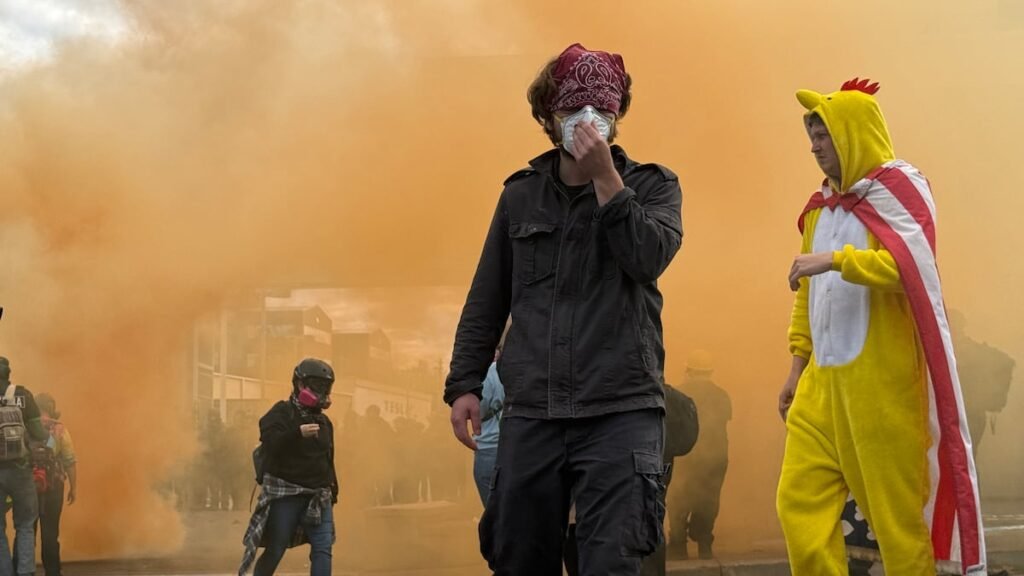Protests Erupt at ICE Facility in Portland Amid National Guard Deployment
On Saturday afternoon, hundreds of demonstrators gathered near the U.S. Immigration and Customs Enforcement (ICE) facility in Portland, Oregon, in a significant outcry against the deployment of federal troops. This protest comes on the heels of President Donald Trump announcing plans to send approximately 200 members of the Oregon National Guard to the city, which has both escalated tensions and sparked widespread public outcry.
Context of the Demonstration
The protest unfolded shortly after a federal judge issued a temporary restraining order against the National Guard’s deployment, a decision that went largely unnoticed until later in the afternoon. Prior to this news, activists assembled at Elizabeth Caruthers Park, expressing their dissent regarding heightened militarization in the city.
Tensions Rise
Around 1 p.m., protesters marched a few blocks to the ICE facility and blocked access to the entrance, creating a peaceful demonstration that quickly shifted into a confrontation. Federal law enforcement agents responded by deploying tear gas and smoke canisters to disperse the crowd. Eyewitnesses reported that officers also fired pepper balls, creating a chaotic scene as demonstrators attempted to protect themselves from the noxious gas. For more details on the judge’s block, see OPB’s coverage.
Arrests and Injuries
During the skirmish, at least seven individuals were arrested outside the facility. Among those detained was Cass Cano, who shared his experience of being pinned down and scratched during arrest. He received a notice for trespassing but was released later that day. The violence surrounding the protests marked a stark reminder of similar conflicts that have emerged in Portland since 2020.
Voices from the Ground
Many protesters voiced their opposition not just to the National Guard’s presence but to the overall treatment of immigrant communities. John Jolley, a protester, noted the lingering effects of tear gas in the area and expressed his resolve that similar incidents seen in previous protests should not recur. “What brought me out here was after 2020 and seeing what was done to our city by the publicity,” Jolley stated, emphasizing the need for peace during these protests.
Another participant, Steve Hall, a former U.S. Army intelligence officer, expressed his belief that local law enforcement should adequately manage any issues without federal intervention. “They don’t belong here,” he said, affirming that Portland’s police force is capable of handling local disruptions without outside military assistance.
Family Involvement in Activism
Brittanee Carr, who attended the protest with her 5-year-old daughter, highlighted the importance of teaching younger generations about activism. She noted that her family had been following updates about the protests via social media, stating, “I want to show her that this is not OK, that you can stand up for what you believe in, and we can come out here and protest peacefully.”
Ongoing Developments
As the afternoon progressed, federal law enforcement continued to manage the crowd, intermittently moving through the area as vehicles entered the ICE facility. The protests are expected to continue in light of ongoing concerns about civil liberties and immigration policies.
For continuous updates on the ongoing situation and more information related to protests involving ICE facilities, follow sources like OPB. Protecting public discourse and freedom of assembly remains critical in navigating these complex issues.
This situation in Portland serves as a microcosm of the broader national dialogue on immigration enforcement and community response. As demonstrators remain vigilant, the spotlight on law enforcement strategies and governmental authority persists, challenging citizens to engage with these pressing issues.
For more insights into immigration reform and protests against federal agents, see related discussions on National Immigration Forum.


